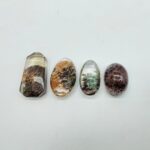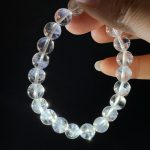Glow in the Dark Phenomena

UV reactive materials have captivated the world with their ability to transform under ultraviolet (UV) light, emitting vibrant colors and patterns. This extraordinary phenomenon stems from the absorption of UV radiation by certain molecules, which then release energy in the form of visible light. The result is a captivating display of luminescence, making UV reactive materials a unique and versatile tool for a wide spectrum of applications.
Industries Impacted by UV Reactivity
The impact of UV reactive technology is far-reaching, extending across various industries:
-
Security and Authentication: UV reactive inks are used in banknotes, passports, and ID cards to enhance security features and prevent counterfeiting. These inks emit a distinct glow under UV light, making fraudulent documents easily identifiable.
-
Healthcare and Forensics: UV reactive dyes are employed in medical imaging, aiding in the visualization of biological structures. In forensics, UV lights are used to detect hidden bloodstains, fibers, and other trace evidence invisible to the naked eye.
-
Art and Entertainment: UV reactive paints, canvases, and fabrics create stunning visual effects in paintings, stage performances, and nightclubs. The ability to manipulate light using UV technology adds an extra dimension to artistic expression.
-
Consumer Products: Manufacturers utilize UV reactive pigments in toys, clothing, and home décor to create glow-in-the-dark effects. These products cater to the desire for fun, creativity, and a touch of magic.
Unveiling the Needs of Customers
Understanding the wants and needs of customers is crucial for successful implementation of UV reactive technology. Here are some common pain points that UV reactive solutions can address:
-
Counterfeiting and Fraud Detection: The need for secure and reliable methods to combat counterfeiting and fraudulent activities. UV reactive inks provide an effective means of preventing forgery.
-
Enhanced Medical Diagnosis: The desire for improved diagnostic imaging techniques to accurately identify and treat medical conditions. UV reactive dyes facilitate the visualization of complex biological structures.
-
Interactive Art Experiences: The demand for engaging and immersive artistic experiences. UV reactive materials allow artists to create captivating works of art that respond to light and shadow.
-
Unique and Memorable Consumer Products: The desire for products that stand out and spark joy. UV reactive pigments enable manufacturers to create glow-in-the-dark items that evoke a sense of wonder and excitement.
Common Mistakes to Avoid
While UV reactive technology offers immense potential, there are certain pitfalls to avoid:
-
Overuse and Saturation: Excessive use of UV reactive materials can lead to overwhelming and visually unappealing results. Careful consideration should be given to the appropriate amount and placement of luminescent elements.
-
Poor Lighting Conditions: The effectiveness of UV reactive materials depends on proper lighting conditions. Insufficient UV lighting can result in lackluster effects, while overexposure can damage the materials.
-
Incompatibility with Other Materials: Some UV reactive materials may not be compatible with certain substrates or adhesives. Thorough testing is essential to ensure compatibility and prevent premature fading or degradation.
-
Customer Overwhelm: Providing too much information about UV reactivity can overwhelm customers. Clear and concise communication is key, focusing on the benefits and applications of the technology without getting bogged down in technical details.
The Future of UV Reactivity
The future of UV reactive technology is bright, with ongoing advancements and innovative applications emerging. Here are some exciting developments to watch out for:
-
Bio-Inspired UV Reactive Materials: Nature serves as a rich source of inspiration for UV reactive materials. Scientists are exploring biomimetic approaches to develop new materials with enhanced luminescence and sensitivity.
-
Multi-Stimuli Response: UV reactive materials are being engineered to respond to multiple stimuli, such as temperature, humidity, and electric fields. This versatility opens up new possibilities for dynamic and interactive applications.
-
Energy Harvesting: UV reactive materials have the potential to harness UV energy and convert it into electrical energy. This breakthrough could lead to self-powered devices and sensors.
-
“Lumenology”: The emerging field of “lumenology” focuses on the science and engineering of light-responsive materials, including UV reactive technologies. This field is expected to yield transformative discoveries that advance the development of advanced materials with unprecedented properties.
Conclusion
UV reactive technology is a rapidly evolving and highly versatile field that has revolutionized industries and ignited creativity across the globe. As scientists and engineers continue to explore the boundaries of this fascinating phenomenon, we can anticipate even more groundbreaking applications and solutions that will shape the future of art, security, healthcare, and beyond.




























